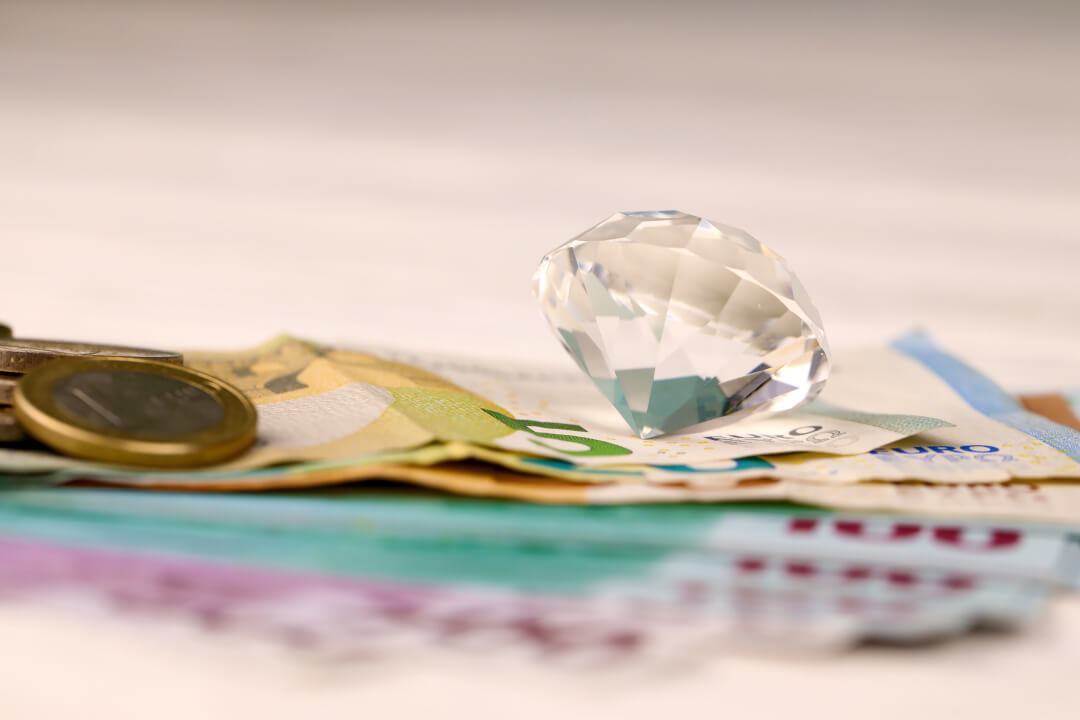The lab-grown diamond is exactly what it sounds like, a genuine, natural diamond created by scientists from nature’s process. It is important to note that a diamond grown in a lab contains the same properties as a diamond formed underground and is just as real. Only the origin of a lab-grown diamond differentiates it from a mined diamond. As a result, lab-created diamonds are more cost-effective than diamonds that are mined.
Lab Grown Diamonds are most definitely valuable. Several factors contribute to the production of some of the world’s most valuable diamonds, including scientists, laboratories, engineers, equipment, time, effort, and expertise. Despite being of higher quality than 97% of mined diamonds, Lab Grown Diamonds will cost up to 40% less than mined diamonds due to the shorter supply chain. In all segments of the mined-diamond supply chain, sales are down, with rough diamond sales expected to decline by 25% and polished diamond sales expected to decline by 10%.The only bright spot in lab grown diamond jewelry will be the branded luxury sector, which is anticipated to grow in the high single digits. As a whole, luxury diamond jewelry represents approximately 15% of the diamond retail market.
The dispute over lab-grown versus mined diamonds has moved from the chemical and structural characteristics of lab-grown diamonds to the financial aspects. In comparison with mined diamonds, lab-grown diamonds sell at a slightly reduced price. The price of 1 carat lab-grown diamonds has dropped significantly in relation to the price of 1 carat mined diamonds.
Every diamond is priced according to an international pricing system, regardless of its origin, whether it is lab-grown or mined. This system is known as the Rapaport Pricing Method and it determines wholesale and retail pricing. The price of a diamond is determined based on the “Four C’s” of diamonds: carat, cut, clarity, and color. Following that, they’re evaluated based on whether they are Lab Grown or mined. Although lab-created diamonds are cheaper than mined diamonds, they provide less value because they cannot be resold.
For example, An average mined diamond retains about 50% of its value after purchase. As a result of time, the diamond’s value will increase (diamond prices have consistently increased throughout history). Whenever we attempt to sell our diamond, we should receive at least half (or perhaps even much more) of what we paid for it initially. Using a lab-grown diamond is not the same as wearing a mined diamond. As a matter of fact, it is considerably less expensive than a mined diamond of similar quality.
Three major factors are disrupting the mined diamond industry: online sales, lab-grown diamonds, and consumers’ growing demands for social and environmental responsibility. It may take two years for the mined-diamond industry to adapt if it is only faced with a disruption from online sales. The industry has ample experience managing, or rather manipulating, its supply chain.
The online sales model requires less inventory both in polished diamonds and diamond jewelry than the traditional brick-and-mortar jewelry store model. In order to support both traditional jewelry stores and online jewelry retailers in a profitable manner, the diamond supply chain may need to adjust. In this regard, the mined diamond industry may even face a greater threat from lab-grown diamonds, which are an environmentally responsible and sustainable alternative.
Diamonds mined from the earth are used in industry as saws and drill bits, but the industry’s future lies in the jewelry industry. Conversely, lab-grown diamonds have applications that go far beyond jewelry and abrasives, including medical, scientific, industrial, and computational uses. As a result, these alternative uses are the lifeblood of the lab-grown diamond sector.
A number of modern objects, such as our mobile phones, are manufactured with lab grown diamonds.Almost every aspect of our phone is made of lab diamonds, from the glass screen to the circuit board wiring.In the future, diamond will replace silicon as the primary semiconductor in electronics and computer processors, as diamond is a vastly superior semiconductor.

